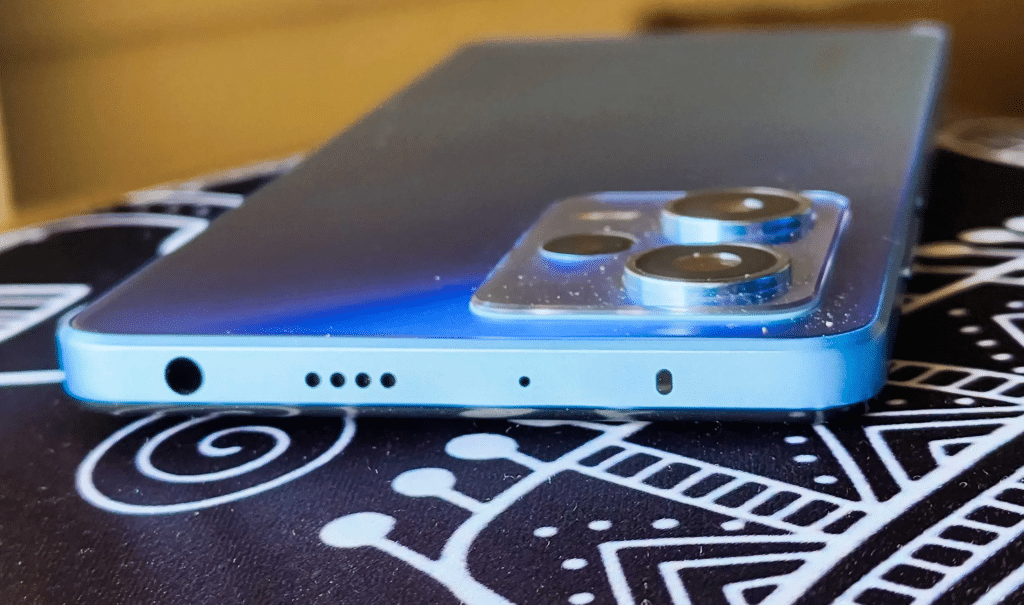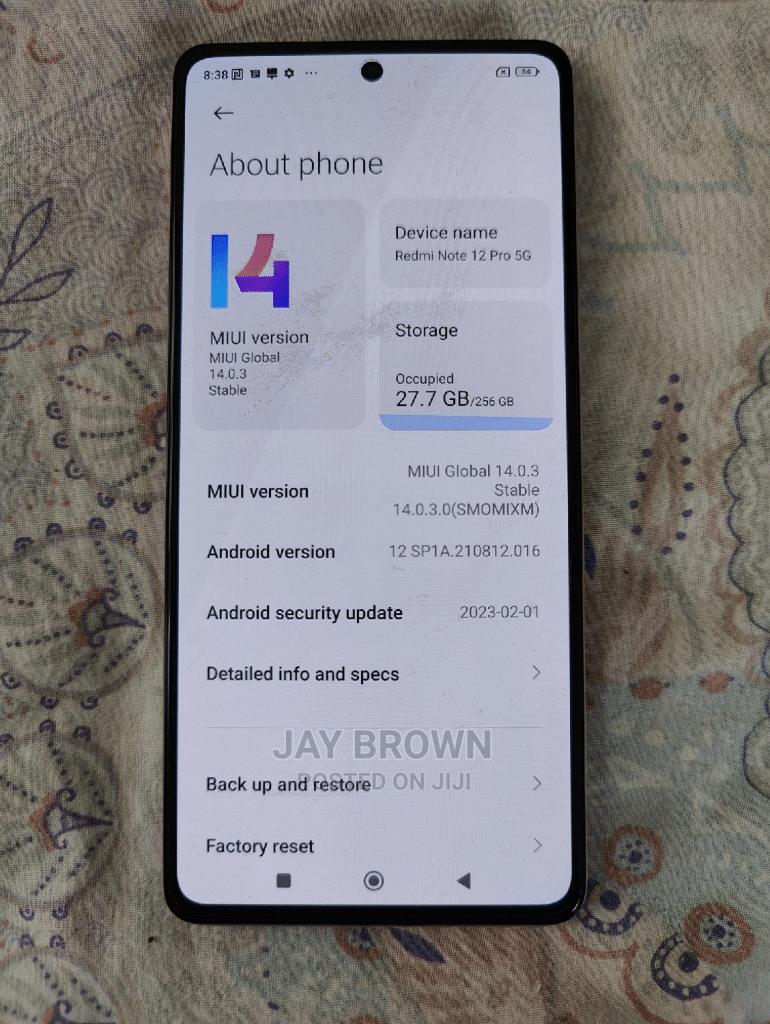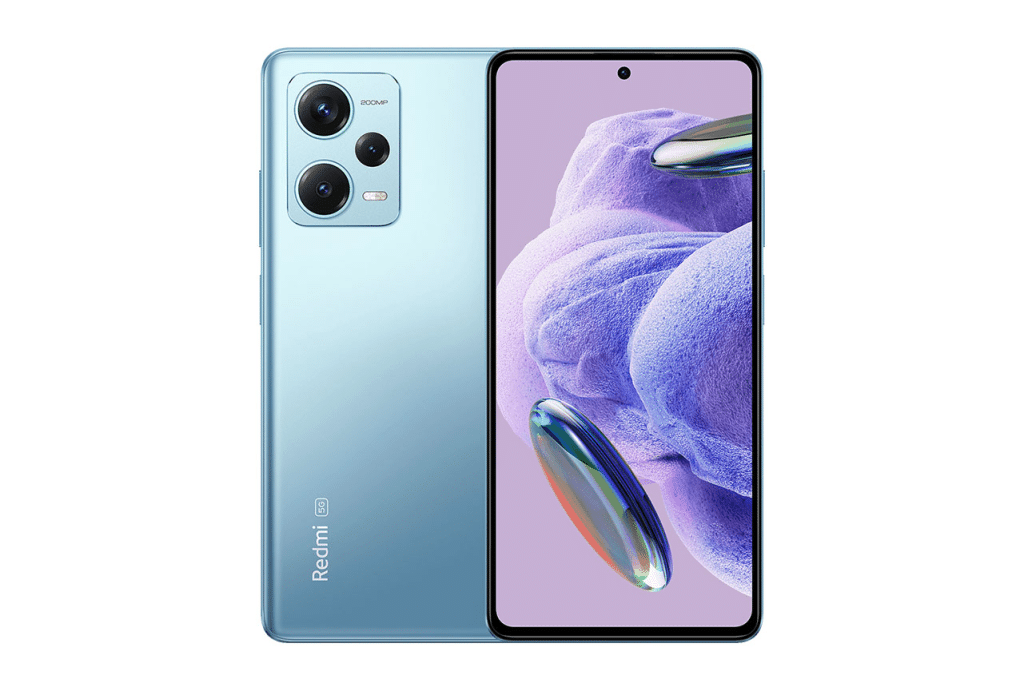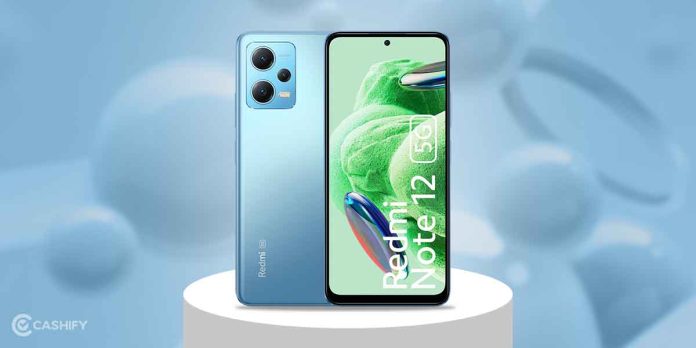Xiaomi’s Redmi Note series has been a consistently popular choice among Pakistani customers since its introduction in Nov, 2022. This series has played a significant role in Xiaomi’s dominance of the Pakistani smartphone market. Redmi Note series has undergone considerable changes in design, technology, and features.
In a recent launch event, Xiaomi unveiled the latest addition to the Redmi Note series, which includes three new models: the Redmi Note 12, Redmi Note 12 Pro, and Redmi Note 12 Pro Plus. All of these smartphones come equipped with 5G capabilities.
Redmi Note 12 Pro price in Pakistan
The expected price of Xiaomi Redmi Note 12 Pro is Rs. 54,999 in Pakistan in official warranty ( without discount ), while the without warranty Grey market cost of Redmi Note 12 Pro Xiaomi is N/A.
The price stated above is valid all over Pakistan including Karachi, Lahore, Islamabad, Peshawar, Quetta and Muzaffarabad. Slight deviations are expected, always visit your local shop to verify Redmi Note 12 Pro specs and for exact local prices.
Redmi Note 12 Pro Unboxing
Xiaomi ships the Redmi Note 12 Pro in a rectangular box made of recyclable material. Inside the box are:
- Redmi Note 12 Pro
- 67W fast charger
- USB Type-C Cable
- SIM Ejector tool
- Clear protective case
- User guide

Design:
The design of the Redmi Note 12 Pro is simple yet stylish, featuring a boxy shape and a glass back panel that looks great from all angles. The phone is available in three colors: Onyx Black, Frosted Blue, and Stardust Purple. Our review focuses on the Frosted Blue model, which has a smudge-resistant frosted texture.

The Redmi Note 12 Pro’s back panel is coated with a matte anti-glare finish, which prevents fingerprint smudges from appearing on the phone.
While it may show some finger smudges, it is not as noticeable as it would be on a glossy surface. The camera island is located on the top left corner of the rear panel, with two camera sensors protruding slightly. This design can make the phone a little unstable when placed on a flat surface.
The glass back panel does not have any additional protection, making it susceptible to cracking if the phone is accidentally dropped. We recommend using the case that comes with the phone to avoid any unnecessary anxiety.

The Redmi Note 12 Pro’s power button, which also doubles as a fingerprint sensor, and volume rockers are located on the right side of the phone. The top of the phone features a 3.5mm headphone jack and an IR blaster, as well as a second microphone for noise cancellation.
The phone’s frame is made of polycarbonate, so there are no visible antenna cuts. An X-axis linear vibration motor in the phone enables customized vibration patterns throughout the user interface for an optimal haptic experience.
Additionally, the phone has an IP53 rating, which is common for most phones in its price range. However, this rating only offers protection against minor water sprays and dust.
Display
With a 6.67-inch AMOLED screen protected by Corning Gorilla Glass 5, the Redmi Note 12 Pro offers an excellent viewing experience. The display boasts a touch sampling rate of up to 240Hz and a refresh rate of 120Hz.
The phone’s adaptive refresh rate feature allows the display to adjust between 30Hz, 60Hz, 90Hz, and 120Hz, depending on the content being viewed. My personal experience using the display has been very positive, with smooth scrolling and excellent gaming performance.

The Redmi Note 12 Pro’s AMOLED panel is characterized by clear and vivid visuals with appropriate contrast levels, as is typical of most AMOLED screens.
The phone’s default color palette is “Vivid,” but users can adjust this to their liking. Personally, I prefer more accurate colors, so I switched to the “Standard” setting for better color precision.
Xiaomi has ensured that the Redmi Note 12 Pro has the necessary Widevine L1 certification at the hardware level to enable HD streaming on popular OTT apps.
Additionally, the phone supports HDR 10+ and Dolby Vision, both of which are compatible with Netflix. This is a feature that the rival Realme 10 Pro+ lacks.
Software and Performance
Similar to its Plus counterpart, the Redmi Note 12 Pro is powered by an octa-core MediaTek Dimensity 1080 SoC chipset.
This chipset uses a 6nm fabrication process, with two performance Cortex-A78 cores running at a maximum speed of 2.6GHz, and six power-efficient Cortex-A55 cores clocked up to 2.0GHz.
The chipset is coupled with up to 8GB of LPDDR4X RAM and UFS 2.2 storage capacity of up to 256GB. The Redmi Note 12 Pro also features RAM expansion technology, which includes up to 5GB of virtual memory.

The Redmi Note 12 Pro comes with MIUI 13 based on Android 12, along with a November 2022 security patch, and Xiaomi has promised to upgrade it to Android 13.
The company has committed to providing two years of software updates and four years of security updates. The phone comes with preinstalled apps such as Amazon Shopping, Facebook, Prime Video, Netflix, LinkedIn, Zili, Spotify, and Snapchat, most of which can be removed.
However, Glance and Get Apps recommendations still persist even though the company has promised to reduce system-wide ads.
In our daily usage, the phone easily handles most tasks without any hassle. Popular apps such as Instagram, Twitter, and Netflix load quickly and smoothly.
To put it to the test, we played several games, including Apex Legends Mobile and Call of Duty: Mobile, and ran benchmark tests. We played Call of Duty Mobile on “Medium” graphics settings and “High” frame rates, and the game ran smoothly, with occasional frame drops but without rapid battery depletion.
Similarly, we experienced smooth gameplay with occasional frame drops while playing Apex Legends Mobile and Genshin Impact.
In terms of thermal performance, the phone boasts a 3000mm² 12-layer graphite sheet with liquid cooling for heat management. We tested its limits by running successive tests, and we didn’t notice any overheating or system throttling.
Camera
The Redmi Note 12 Pro’s rear camera system is highlighted by a 50-megapixel Sony IMX766 sensor, which has also been used in other notable devices such as the Oppo Reno 8, OnePlus 10T, and Nothing Phone.
In addition to the main camera, the setup also includes an 8-megapixel ultra-wide angle camera and a 2-megapixel macro camera. For selfies, there’s a 16-megapixel front-facing camera. The camera app’s user interface is familiar for those who have used Xiaomi phones before, making it easy to capture photos and videos on the device.

Battery Life
The Redmi Note 12 Pro is equipped with a 5,000mAh battery, which is common among modern-day smartphones. Our testing revealed that the phone’s battery life is satisfactory, as we never experienced any battery anxiety during usage.
With the screen refresh rate set to 120Hz and connected to a 4G LTE network, we managed to get over six hours of screen-on time. However, when using the phone on Jio 5G, we noticed that the battery drained at a faster rate.
The device comes with a 67W charger in the box, which can charge the phone up to 45 percent in just 15 minutes. It takes a little over an hour to charge the battery from zero to hundred percent.
Despite the hype surrounding the Xiaomi Note 12 Pro, there are concerns that it could be a flop smartphone. Here are some of the factors that could contribute to its failure in the market.
Overpriced:
One of the most significant concerns about the Xiaomi Note 12 Pro is its expected price. The smartphone is expected to cost over $1,000, which is significantly more expensive than many other premium smartphones in the market. For instance, the Samsung Galaxy S21 starts at $799, while the iPhone 12 starts at $799 as well. Even the recently released Samsung Galaxy S21 Ultra, which is packed with features, is priced at $1,199.
Given the current economic climate, where consumers are more budget-conscious than ever, it may be challenging for Xiaomi to convince consumers to spend such a significant amount of money on a smartphone, especially when there are more affordable options with similar features available. Moreover, Xiaomi’s primary appeal has always been its affordability, so a steep price increase could potentially alienate its loyal fan base.
Limited Availability:
Xiaomi has had availability issues with its smartphones in the past. There is a concern that the Xiaomi Note 12 Pro will not be available in all markets, and even in the markets where it is available, it may not be widely available. Xiaomi’s distribution network is not as strong as that of some of its competitors, which could make it difficult for the company to reach a wider audience.
If the Xiaomi Note 12 Pro is not readily available, it could lead to frustration among consumers who are eager to purchase the phone but are unable to do so due to availability issues. Moreover, limited availability could give an advantage to its competitors who have a wider distribution network.
Lack of Innovation:
One of the most significant challenges for smartphone manufacturers today is the lack of innovation. Most smartphones offer similar features, and it is becoming increasingly difficult to differentiate oneself from the competition. The Xiaomi Note 12 Pro is expected to have impressive specifications, including a powerful processor and a large display, but there are concerns that it may not offer anything new or innovative.
If the Xiaomi Note 12 Pro fails to offer anything new or exciting, it may be challenging for the company to differentiate itself from its competitors. Consumers may not be willing to pay a premium price for a device that does not offer any significant advancements or unique features.
Competition:
The smartphone market is incredibly competitive, with many established players vying for market share. Xiaomi will be competing against major smartphone manufacturers such as Samsung, Apple, and Huawei, all of whom have a strong presence in the market. These companies have established brand recognition and customer loyalty, which could make it difficult for Xiaomi to convince consumers to choose the Xiaomi Note 12 Pro over other established brands.
Furthermore, Xiaomi is not the only Chinese smartphone manufacturer that is offering premium features at a competitive price.


